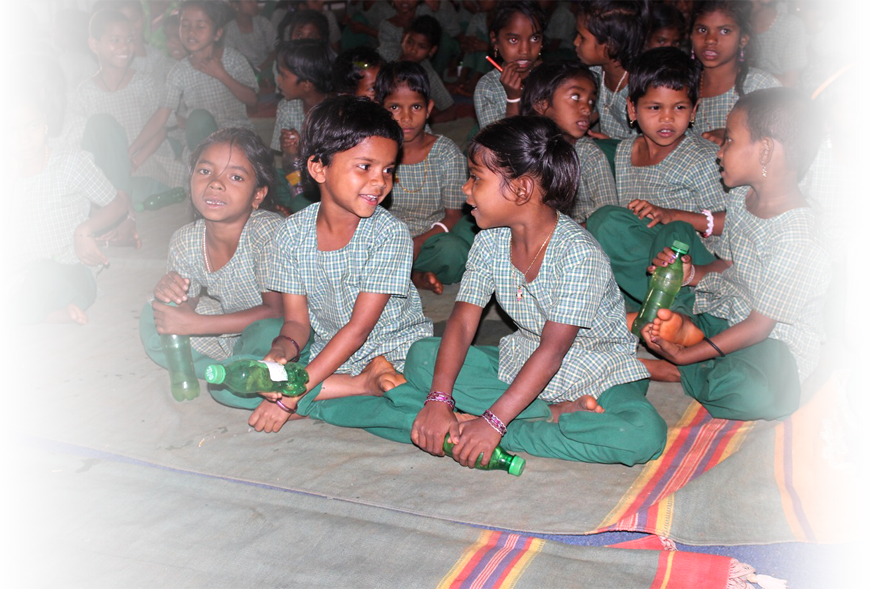WATERSHED DEVELOPMENT
Agragamee believes that the integrated activities adopted under natural resource management can generate livelihood options, protect environment and promote socio-economic development of the people. The ultimate benefit eventually goes to the community while adding value to the local environment resources. Agragamee has been involved in such an integrated and creative approach for the last 15 years, and has gained immense insights and experience in the process.
AIMS AND OBJECTIVES
To improve and enhance the purchasing power of the people and facilitate their empowerment for better bargaining power.
To ensure food security
To adopt an integrated approach of developing the natural and human resources.
To improve the managerial capacity of the people.
To impart training to farmers & watershed users groups.
To generate employment & income earning capacity of the watershed users groups.
To arrest the soil erosion & to improve the production of land.
To improve the availability of water resources & its proper management.
The tribal populations have suffered a lot due to the geographical location of the area as well as lack of appropriate and integrated programmes for their development. The vast natural, human and other resources of the area have not been properly managed. Various land-based development programmes have failed to attract the farmers as their production seems to be highly disproportionate to the investment.
Watershed development has been one of Agragamees key intervention in natural resource management for promotion of sustainable livelihood. The Watershed projects initiated by Agragamee in six districts have had great impact on mitigating the risks associated with drought-prone areas of the state. The interventions include bunding, gully plugs, check dams, multipurpose tanks, dug wells, irrigation canal & diversion weir, along with training and of community members in improved farming, and better land use. Some of the watershed efforts are outlined below :
Badanala Watershed
In the village of Luburusing, a canal dug from the source of water was used to divert water to the fields. But the canal was devoid of any storage capacity of its own and proved futile during prolonged dry spells- the time when water is most required.
Under the watershed programme, it was possible to construct a check dam and tank, enabling the storage of water and providing security in times of drought.
The structure comprises a silt trap and an outlet box, allowing for the management of surplus water. The total storage capacity is 2 acre feet for irrigation and 4 acre feet as dead storage. This dead storage water could be used for fishery, thereby generating a source of income. The tank also checks the run-off from the surrounding upland hills. During the monsoon, the area used to experience huge landslides.
Presently, the existing watershed has been able to tackle these problems and contributes to the irrigation and water requirements of the area. The multi-purpose tanks have been able to protect 11 acres of land, ensuring irrigation to 16 farmers.
Incidentally, the project has contributed to a rise in the water table and the water in wells, benefiting 14 farmers in surrounding areas. With the regularity and confidence of assured water supply, the cultivation of rabi and summer vegetable cultivation is now made possible. Under the watershed programme, 7 farmers have been provided with dug-wells to meet their individual cultivation needs.
As in other villages where multi-purpose tanks have been constructed under the watershed programme, the people are able to reap the rewards directly. People from surrounding villages have come to view the structures in Luburusing and are now demanding that their Panchayat take up similar work- instead of merely providing employment for the construction of roads.
Peepalpadar Watershed
lpadar watershed has substantial water resources, which proves to be a sound base for developing the surrounding land and irrigation facilities in the area. The watershed has an elongated flow, which could be treated in several stages through small check dams. A series of dams have been constructed across the Peepalpadar Nala and several gully control structures have been implemented.
This has contributed towards dry season irrigation as well as increasing the soil moisture levels, simultaneously enabling the reclamation of nearly 40 acres of land being eroded by the monsoon run-off. Assured irrigation allows for the optimisation of land resources for better agriculture. The cropping intensity in this area has gone up an overwhelming 300%.
Other check-dams have also been constructed under the watershed programme, providing irrigation mainly for rabi crops.
These constructions have provided the area with multiple benefits like the reclamation of land area for cultivation as well as the prevention of the leaching of nutrients in the soil. This was a major concern in this area as the denudation of the surrounding hills had led to extensive erosion and caused the formation of several ravines in the watershed area.
Initial difficulties in determining a suitable course of action were overcome through interaction with the villagers. This project covers 30 acres and benefits 40 farmers who cultivate three crops. The terrain in this area also facilitates easy irrigation, aside from the implemented structures of the watershed programme.




